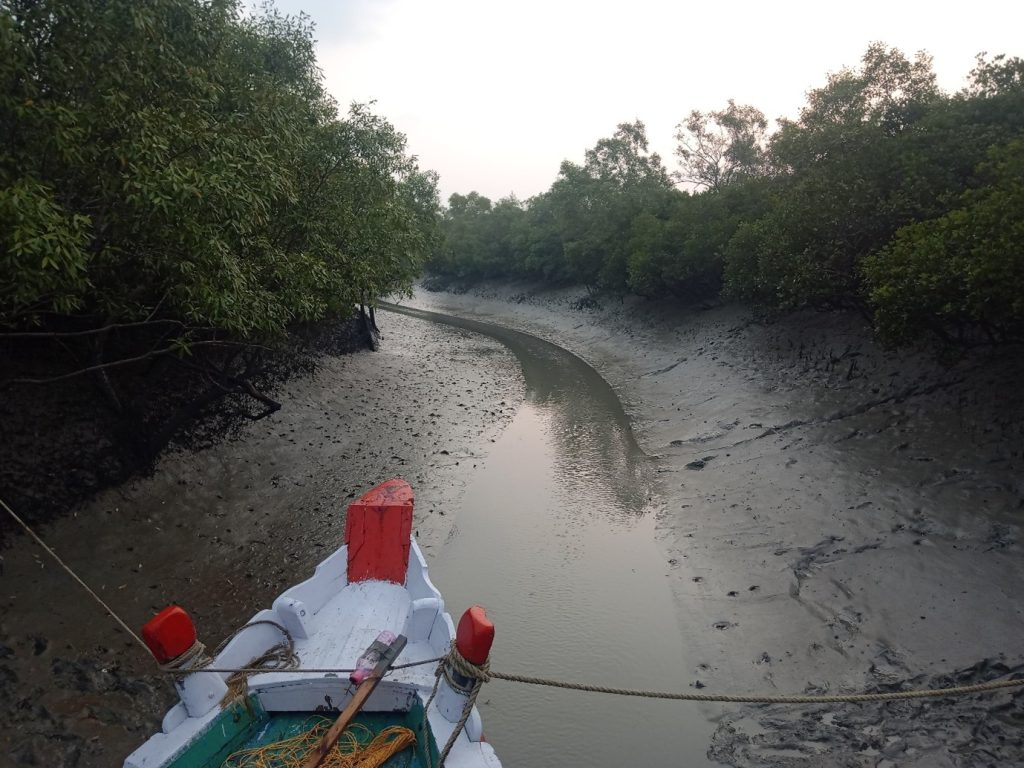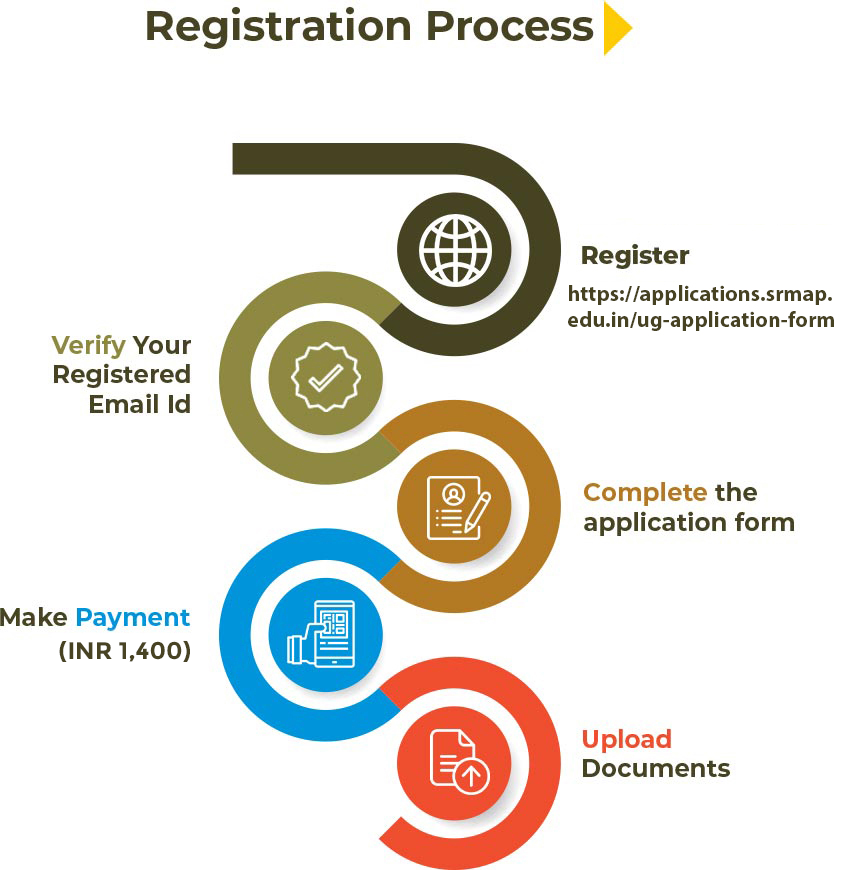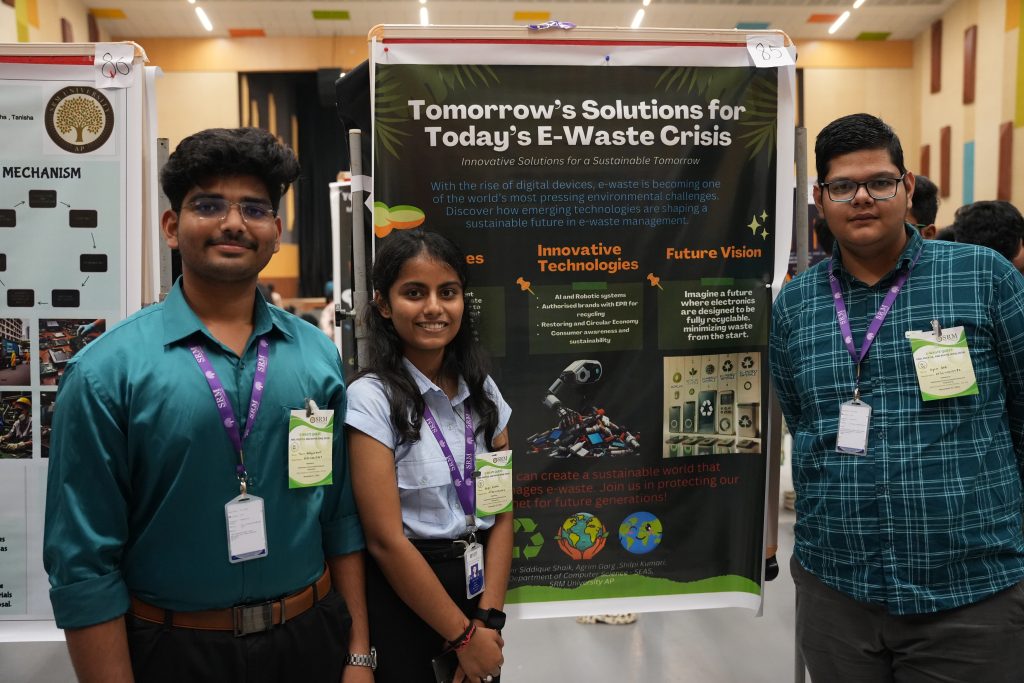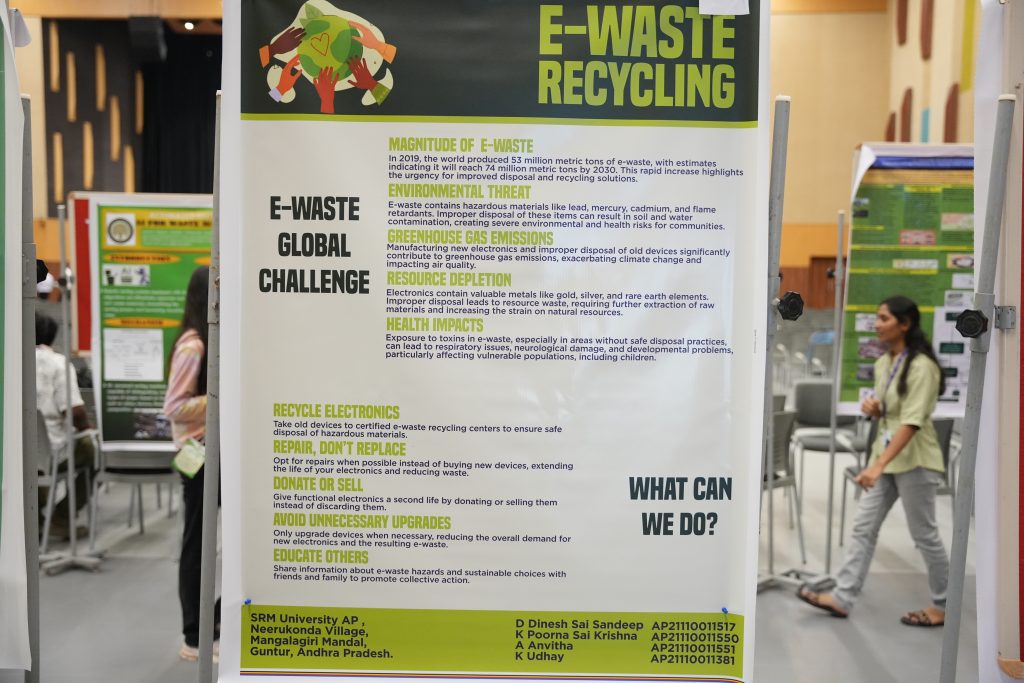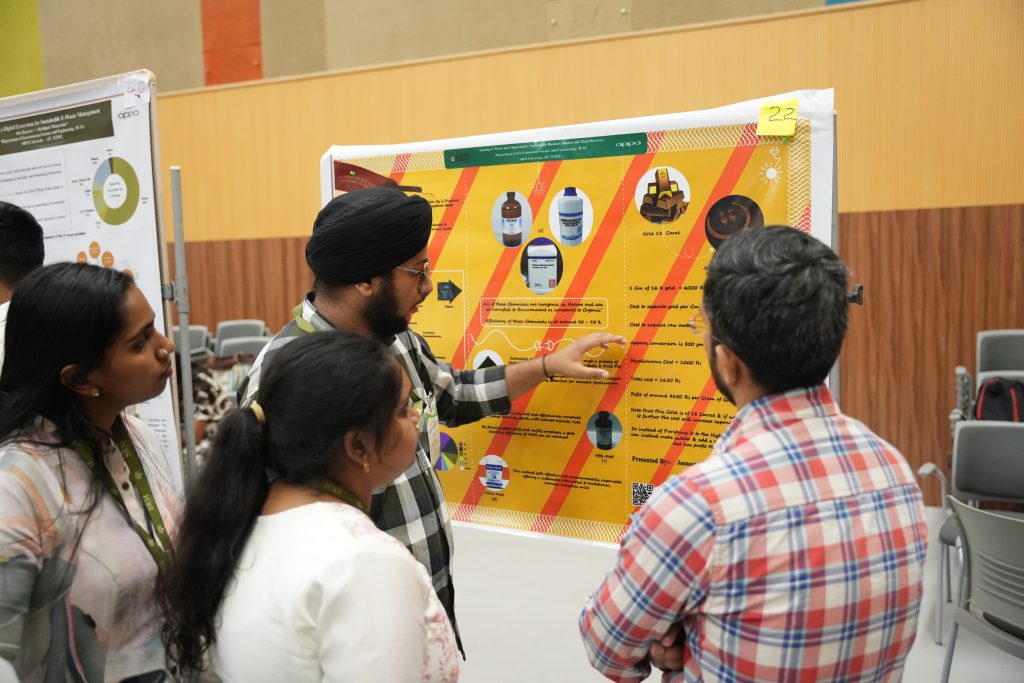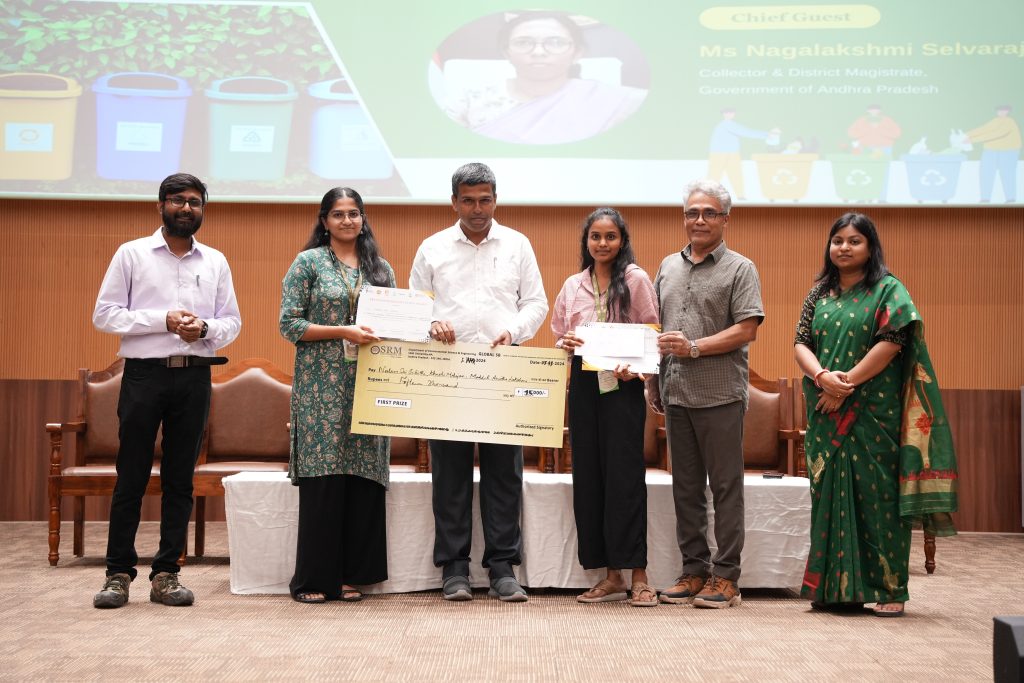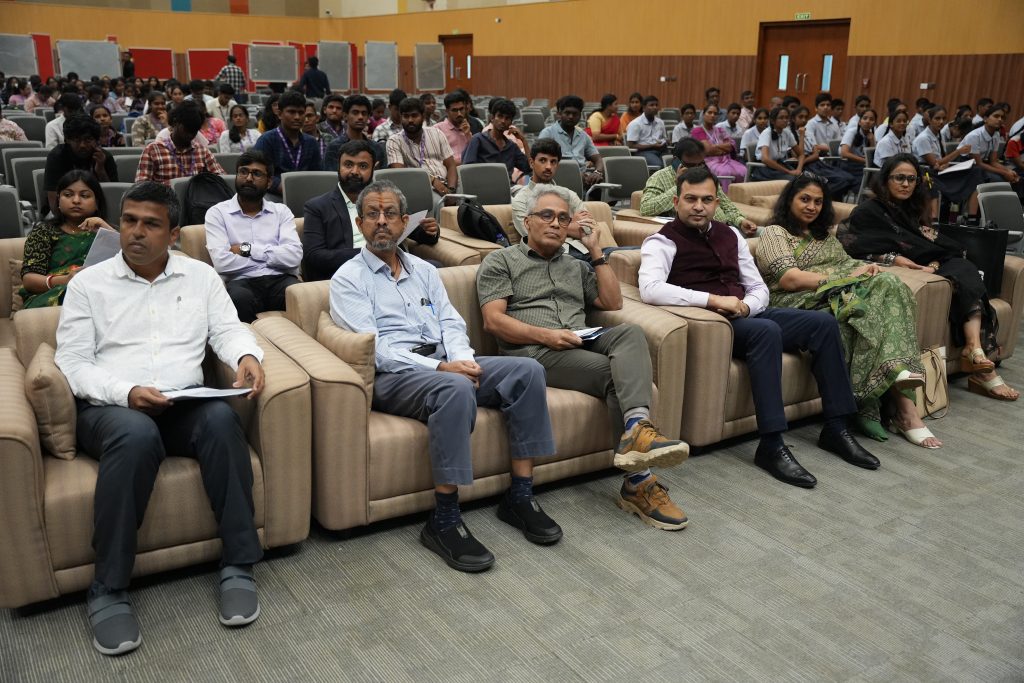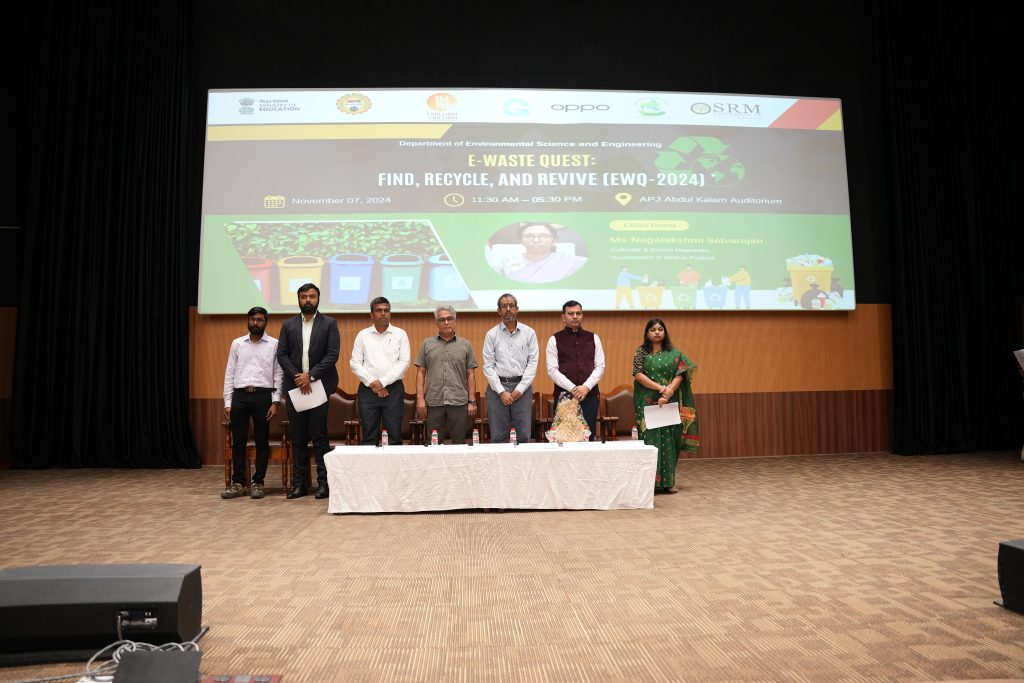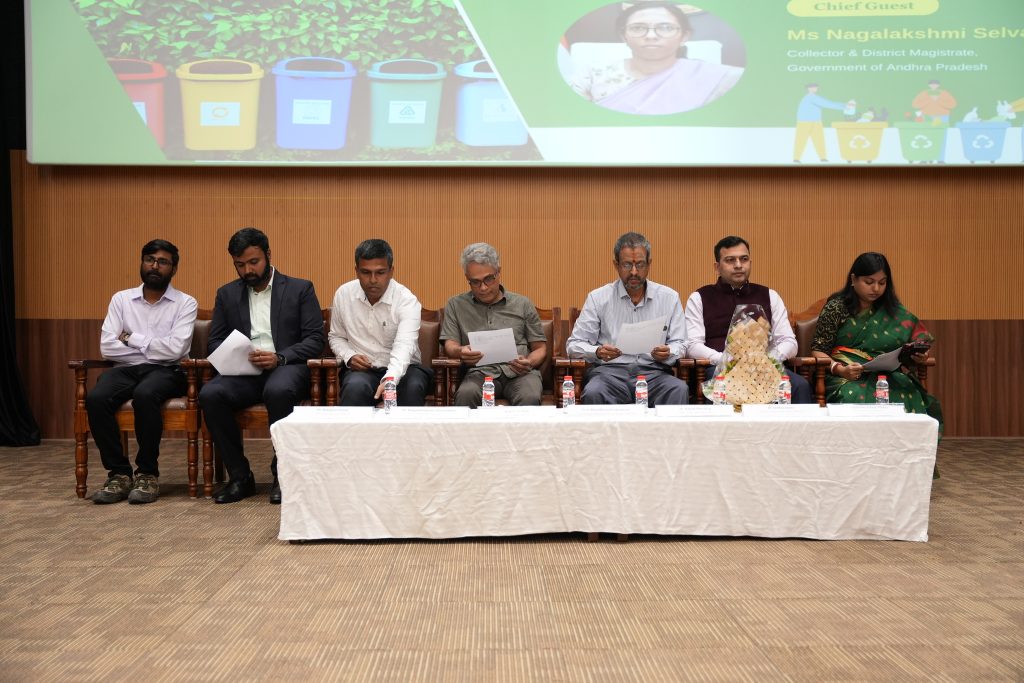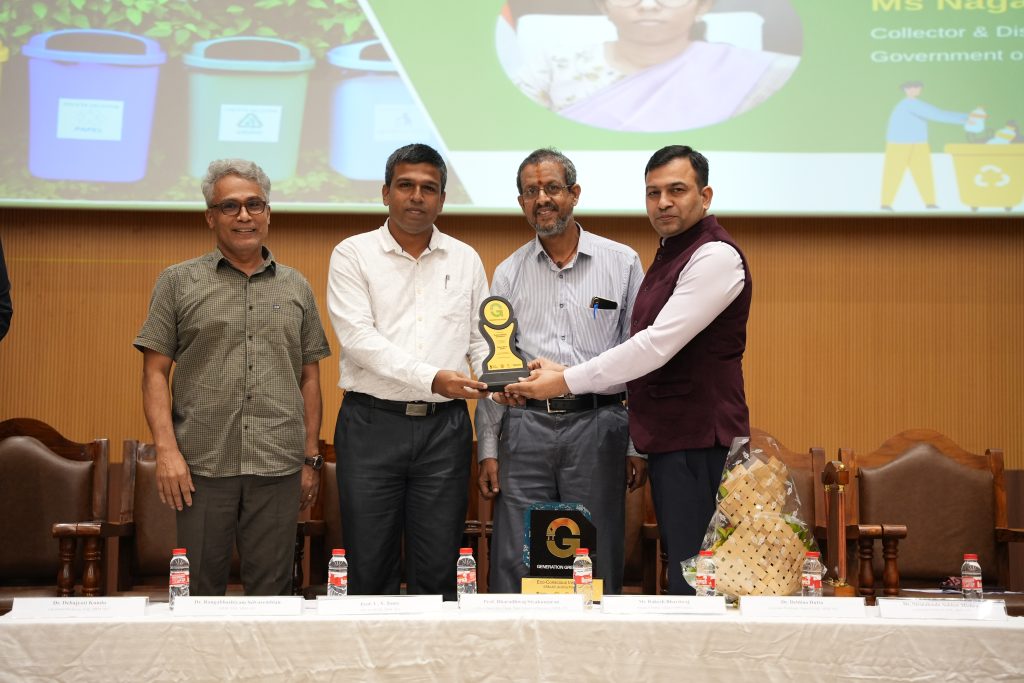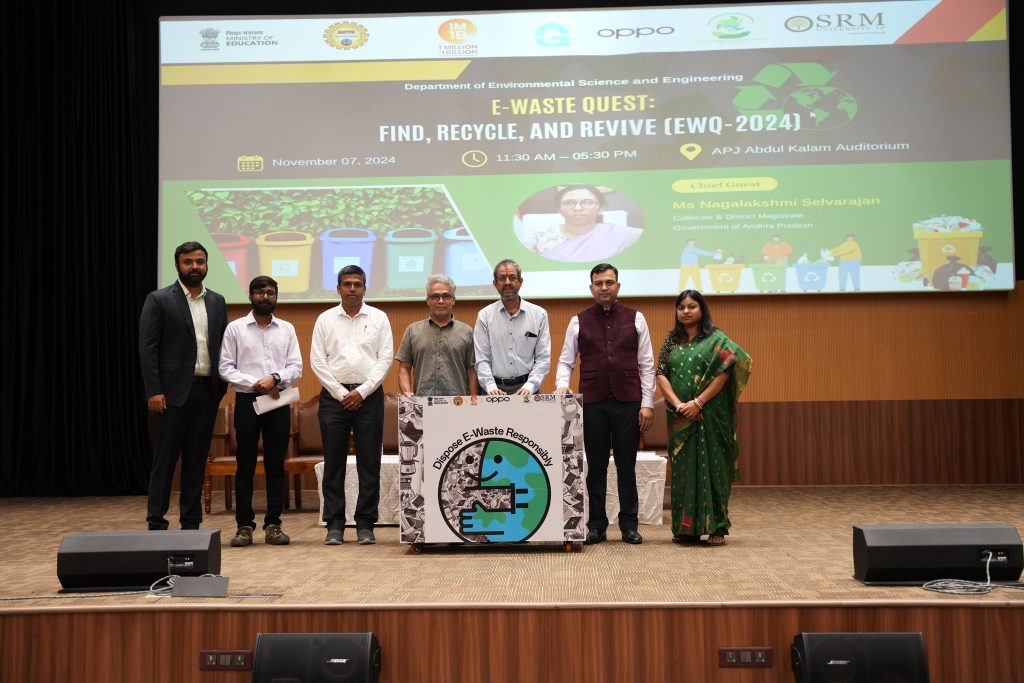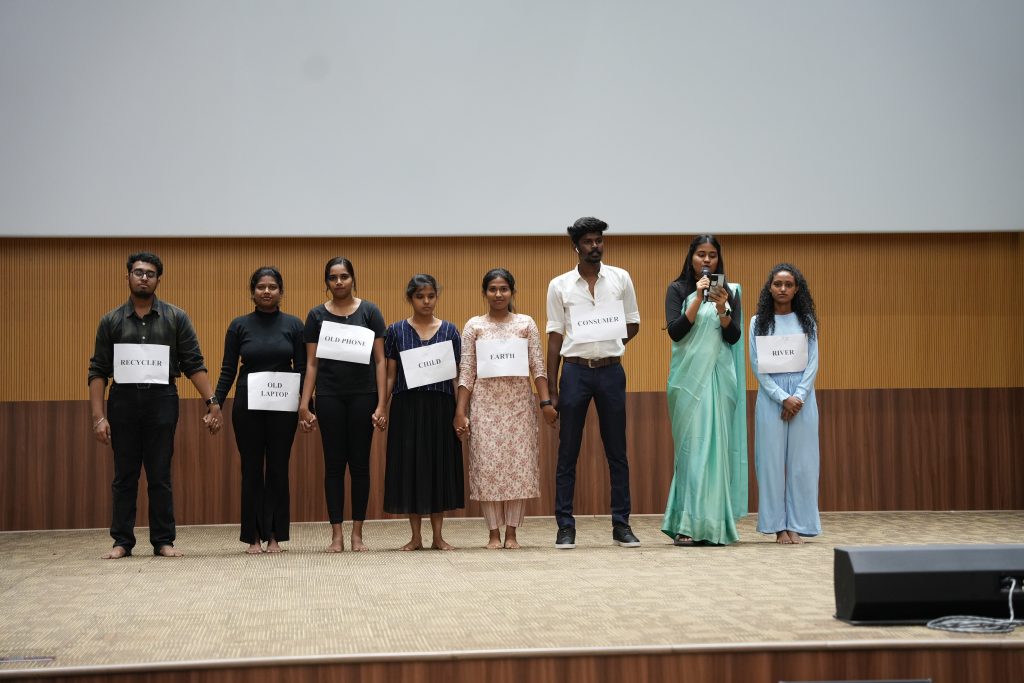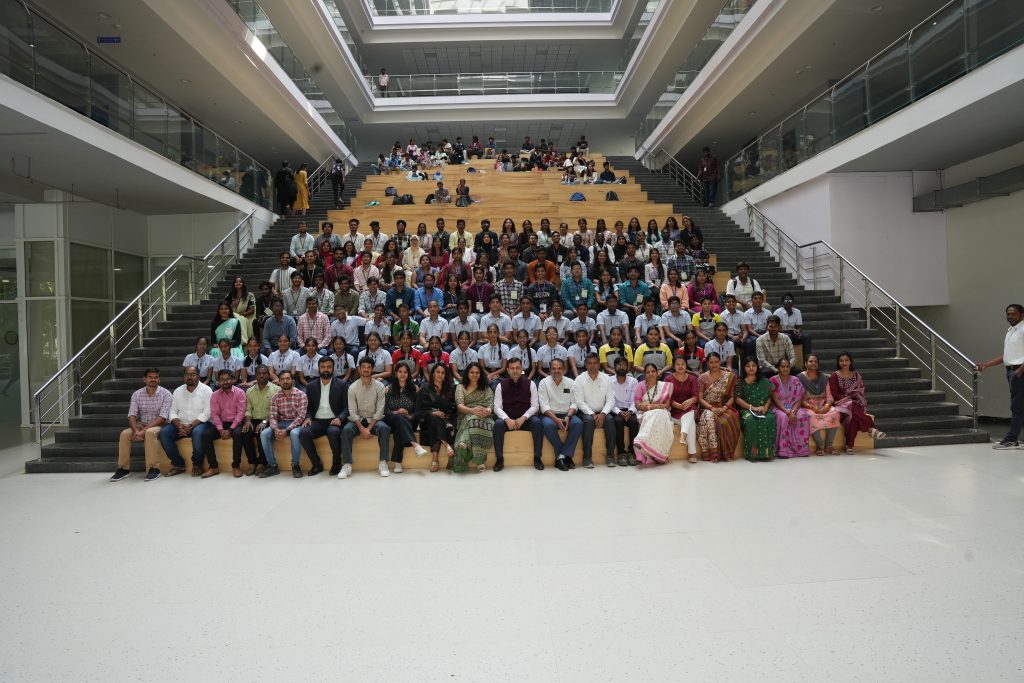- SRMJEEE 2025 : Complete and Latest Information November 12, 2024
BTech / Integrated MTech – SRMJEEE Application 2025
If you are here, then the chances are that you already know that SRMJEEE 2025 is the Joint Engineering Entrance Examination held by the SRM Institute of Science and Technology. Appearing for SRMJEEE 2025 is a very convenient method to get into one of the finest research institutes in any part of the country.
Through SRMJEEE 2025, you can become a part of SRM University-AP. Innovation and research at SRM University-AP are multidisciplinary and cutting-edge. You can be a part of one of the most advanced classrooms, learn from exclusive field experts from India and abroad, even take up a semester abroad yourself, and much more.
Are you interested in applying? You are just one simple click away from the smoothest application procedure.
Application for Admissions 2025 is Opened!.Want to know more? Don’t worry. We will walk you through the entire process. This is as simple as it gets.
Table of Contents
- SRMJEEE 2025 Important Dates
- SRMJEEE 2025 Admission Process
- SRMJEEE 2025 Examination Question Pattern
- SRMJEEE 2025 Syllabus
- SRMJEEE 2025 Eligibility
- SRMJEEE 2025 Application Process
1. SRMJEEE 2025 Important Dates:
The dates for the two-phase examination procedure of SRMJEEE 2025 have been released.
Entrance Exams for Engineering Programs (SRMJEEE): Number of SRMJEEE Phases – 3 Timeline of SRMJEEE Phases Phase 1* Phase 2* Phase 3*# SRMJEEE (Remote Protected Online Mode)** April 22-27, 2025 June 12-17, 2025 July 04-05, 2025 Application Deadline for Each Phase April 16, 2025 June 06, 2025 June 30, 2025 * The mentioned dates are tentative and might be subject to change
** The applicant can take up the examination from their home using their Desktop/Laptop.
*#The allotment of seats in Phase-3 may subject to change depending on the availability of seats across the campuses
SRMJEEE 2025 Phase-2 Instructions
2. SRMJEEE 2025 Admission Process:

3. SRMJEEE 2025 Examination Question Pattern:
- Each question carries one mark. There are NO negative marks. You are encouraged to attempt every question.
- The mode of examination will be online.
- The question paper type will be MCQs or Multiple Choice Questions only.
- The question paper will be in English ONLY.
- Physics- 35 questions
- Chemistry- 35 questions
- Mathematics/Biology- 40 questions
- English & Aptitude- 20 questions
- Total number of questions- 130
- Total Marks- 130
- Total Duration: 2.30 hrs
- No Negative Marks
SRMJEEE Sample Papers Download Link SRMJEEE Question Papers 2023 Download Here SRMJEEE Question Papers 2022 Download Here SRMJEEE Question Papers 2019 Download Here SRMJEEE Question Papers 2018 Download Here SRMJEEE Question Papers 2017 Download Here SRMJEEE Question Papers 2015 Download Here 4. SRMJEEE 2025 Syllabus:
5. SRMJEEE 2025 Eligibility:
A. Nationality and Age
- Resident Indian or Non-Resident Indian (NRI), holder of PIO or OCI card issued by the Government of India are eligible to apply for SRMJEEE (UG).
Note: NRIs, holders of PIO or OCI card issued by the Government of India who has not taken the SRMJEEE (UG), must apply under the international student category only. - Students should have attained the age of 16 years and 6 months on the 31st of July of the calendar year in which the 12th Board examination is to be held.
B. Eligibility to apply for the Qualifying Examination:
- A minimum aggregate score of 60% or equivalent grade point in Class X.
- Passed with Minimum 60% aggregate or equivalent grade in Physics, Mathematics, and Chemistry/ Computer Science/ Information Technology/ Informatics Practices/ Engineering Graphics in 12th Standard/Higher secondary examination (10+2 pattern ) /Intermediate (first and second year) or appearing in 12th Standard/Higher Secondary examination(10+2 pattern)/Intermediate in the current academic year with Physics and Mathematics as compulsory subjects along with any one of the subjects, Chemistry/ Computer Science/ Information Technology/ Informatics Practices/ Engineering Graphics as major subjects in regular stream from any state board within India, CBSE, ISCE, Matriculation, or NIOS are eligible to apply. However, admission is confirmed based on meeting the minimum 60% aggregate or equivalent grade in Physics, Mathematics, and Chemistry/ Computer Science/ Information Technology/ Informatics Practices/ Engineering Graphics in 12th Standard/Higher secondary examination (10+2 pattern) /Intermediate (first and second year).
- GCE A-Level: Minimum C grade in Physics and Mathematics and Chemistry/ Computer Science/ Information Technology/ Informatics Practices/ Engineering Graphics. Physics and Mathematics should be compulsory subjects along with one of the Chemistry/ Computer Science/ Information Technology/ Informatics Practices/ Engineering Graphics as major subjects (equivalent to Advanced Placement level in each subject) in any international schools within India.
- International Baccalaureate (IB) diploma or IB certificate: Minimum 4 points each in Physics and Mathematics and Chemistry/ Computer Science/ Information Technology/ Informatics Practices/ Engineering Graphics.
- 2 subjects in HL (equivalent to Advanced Placement level or Honors) and 1 subject in SL is mandatory.
Programme HL SL/HL All BTech / Integrated MTech Programmes Maths Physics and Chemistry / Computer Science/ Information Technology/ Informatics Practices/ Engineering Graphics Note:
- If Computer Science/ Information Technology/ Informatics Practices are considered for eligibility, then the candidate will be eligible only for BTech CSE and specialisations in Computer Science.
- For all other programmes (ECE, EEE, Mechanical Engineering, and Civil Engineering), Chemistry will be taken for eligibility.
- Students who have completed +2/Intermediate/equivalent under NIOS must have completed the 10th standard/equivalent from regular schooling or vice-versa.
- For the Board of Intermediate Education (Andhra Pradesh) Average of first and second-year marks is considered.
C. Criteria for Admission
Indian students
- Admission will be based on meeting the eligibility conditions listed in Section A and Section B and the performance in the qualifying examination i.e., SRM JEEE / SRMAPET.
- The decision of the admission committee will be final and binding.
D. Admission Instructions
Continue reading →- BTech programmes listed on the website are indicative only. SRM University-AP reserves the right to add and delete programmes and amend the list depending on the viability of offering the same.
- The admission will be purely on the basis of the performance in the SRMJEEE (UG)/SRMAPET entrance examination conducted by SRM University-AP. Being called for the entrance test and enrolment does not necessarily mean accepting eligibility. It is the responsibility of the candidates to ascertain whether they possess the requisite eligibility for admission.
- Eligibility criteria such as the minimum percentage of marks in PCM or CGPA obtained by the candidate in the qualifying examination and minimum percentage in the 10th standard shall be as prescribed by the SRM University-AP from time to time.
Note: The aggregate percentage of marks obtained in the 10th Standard/ PCM in 12th Standard/Intermediate/equivalent should be calculated up to 3 decimal points and not be rounded off to the nearest integer. - Academic tuition fees, hostel fees, mode of payment, and refund policies will be available on the university website.
- The admission offered to a candidate who has been provisionally admitted to a programme will stand cancelled if he/she does not submit the relevant documents pertaining to admission (such as Marks Statements, Transfer Certificate, Conduct Certificate, etc.) in their original during enrolment before the date stipulated by the university.
- Even after admission, the university reserves all rights to cancel the candidate’s admission in case, any discrepancy is noticed on verification of facts from the original certificates/documents. The decision shall be final and binding on the candidate. The university cannot be held responsible for any loss or damage arising from such cancellations of admissions.
- Accommodation in SRM University-AP hostels will be subject to availability. The allocation will only be done after the tuition fee payment and enrolment procedure are completed.
- All disputes are subject to the jurisdiction of the courts only at Vijayawada.
- Refund Policy: Candidates are requested to visit the SRM University-AP website for the detailed refund policy, timeline and eligibility percentage of tuition fee.
- Mr Aveek Majumdar November 12, 2024
- Industry Experts Inspire Future Leaders at Paari School of Business November 11, 2024
The Hans India
Continue reading →

The Pioneer
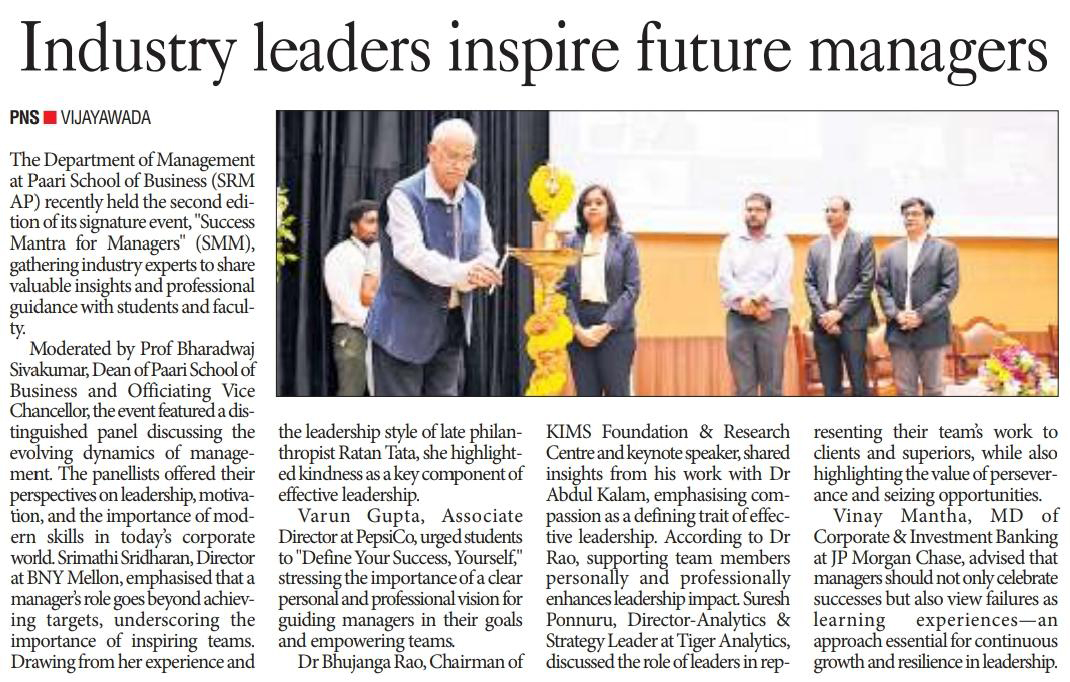
The New Indian Express
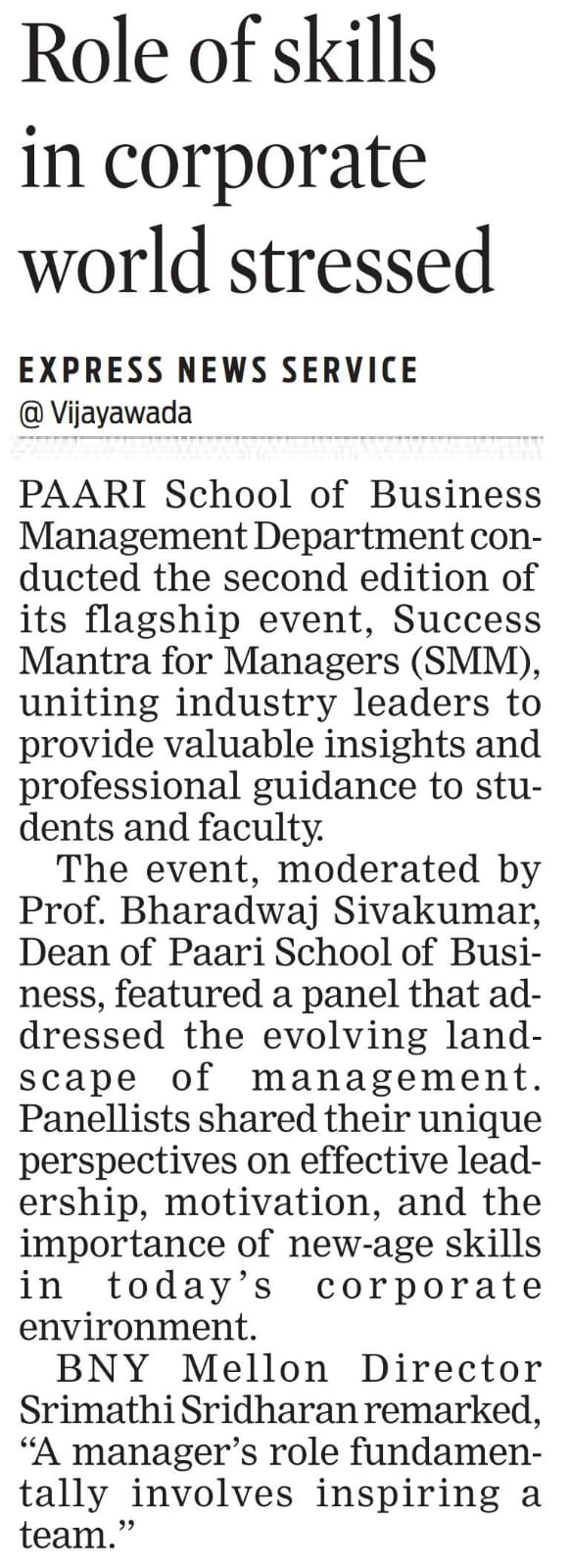
ANI News

Newsvoir
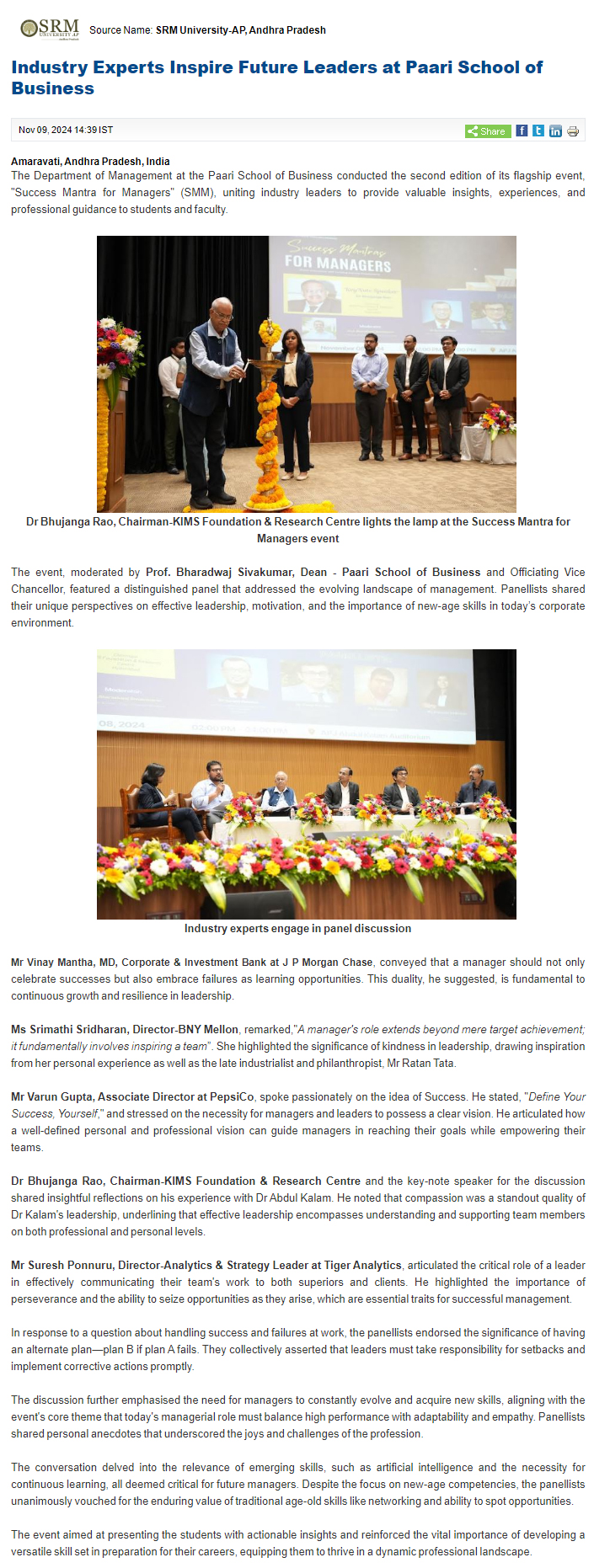
Mangalagiri Times

Visalaandhra
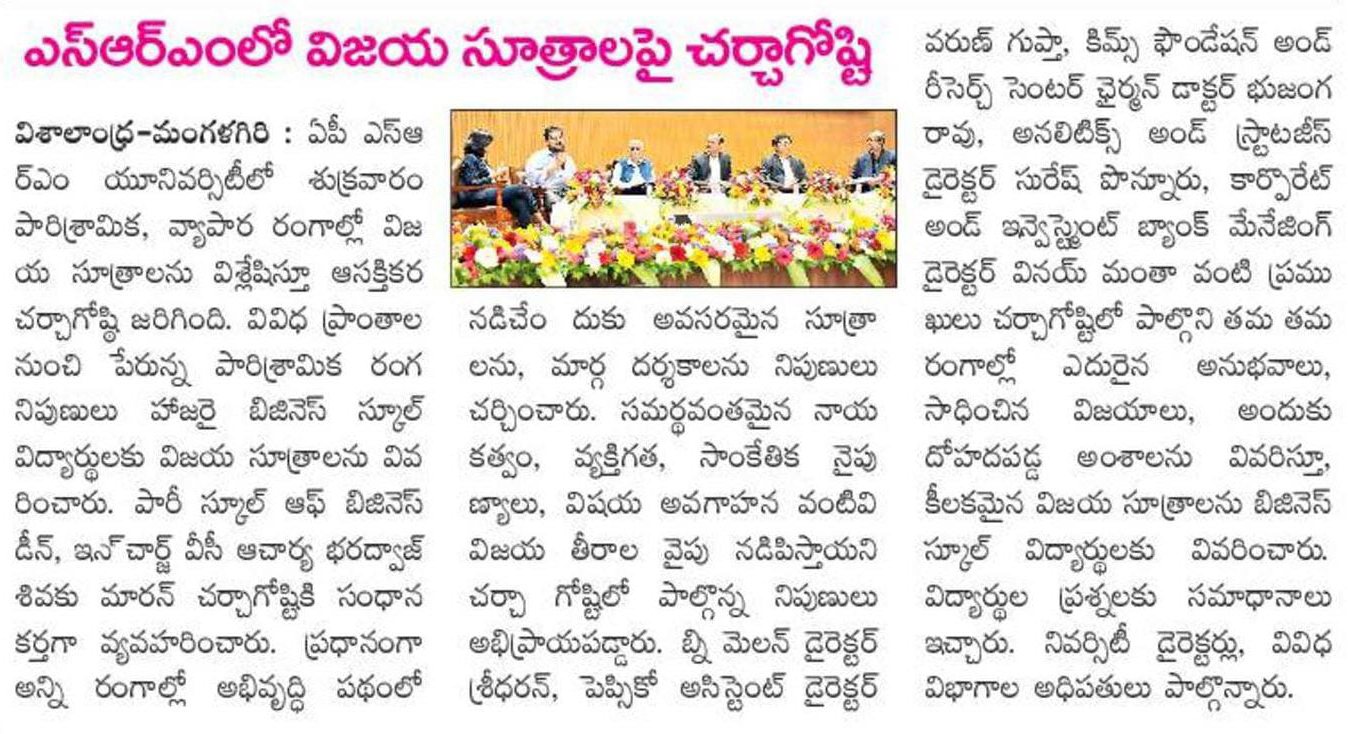
Journalist File
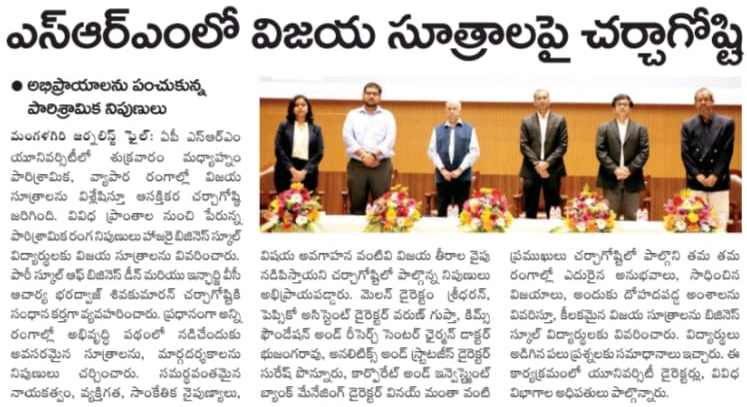
Andhra Patrika
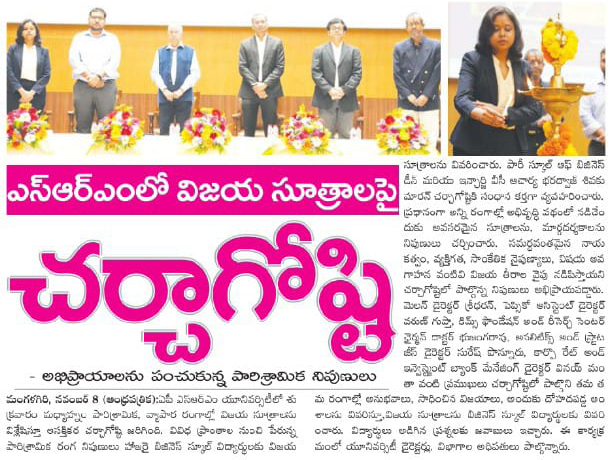
Andhra Prabha
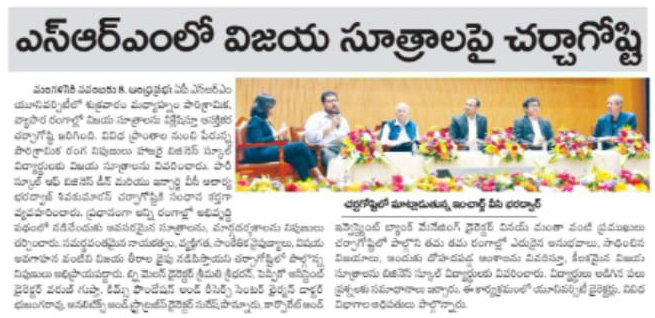
- SRM AP Joins OPPO India in its Clarion Call against E-Waste November 9, 2024
 SRM University-AP, in collaboration with OPPO India and the All-India Council for Technical Education (AICTE), is partnering to support “Generation Green”—a national-level initiative aimed at empowering youth to become advocates of sustainability through green skills and actionable commitments. The first phase of the campaign saw AICTE and OPPO India partner with 1M1B to promote sustainable practices among youth by offering green internships to students across India. Launched on July 08, 2024, by AICTE Chairman Prof. T G Sitharam, in the presence of Dr Buddha Chandrasekhar, CCO, AICTE, over 9,000 students from more than 1,400 institutions applied to join the noble venture.
SRM University-AP, in collaboration with OPPO India and the All-India Council for Technical Education (AICTE), is partnering to support “Generation Green”—a national-level initiative aimed at empowering youth to become advocates of sustainability through green skills and actionable commitments. The first phase of the campaign saw AICTE and OPPO India partner with 1M1B to promote sustainable practices among youth by offering green internships to students across India. Launched on July 08, 2024, by AICTE Chairman Prof. T G Sitharam, in the presence of Dr Buddha Chandrasekhar, CCO, AICTE, over 9,000 students from more than 1,400 institutions applied to join the noble venture.The second phase of the ‘Generation Green’ campaign witnessed SRM AP’s partnership with OPPO and AICTE for educating youngsters about the need for responsible electronic waste management. In alignment with this initiative, the varsity conducted E-Waste Quest 2024, wherein it enlightened students on the issue of waste management of discarded electronic items such as mobile phones, chargers, batteries, and wires. With over 400,000 pledges to date, the campaign now targets one million youth engagements by the end of 2024 to create a lasting impact on e-waste management and environmental preservation. On the occasion OPPO India awarded the SRM University with the title of Eco-Conscious Institution, reflecting the varsity’s commitment to sustainability.
Pro-Chancellor Dr P Sathyanarayanan and Vice Chancellor Prof. Manoj K Arora congratulated the Department of Environmental Science and Engineering for their dedication and commitment to this cause, while Prof. Bharadhwaj Sivakumaran, Dean-Paari School of Business and the officiating Vice Chancellor, emphasised, “Initiatives like the Generation Green Campaign illustrate how small, purposeful actions can catalyse significant change toward a sustainable future.”
Prof. C V Tomy, Dean of the School of Engineering and Sciences, addressed the gathering with an inspiring call to action, stating that every school must have an e-waste collection centre. He stated, “This effort not only promotes responsible disposal but also opens doors to entrepreneurial opportunities, instilling a mindset of sustainability and innovation among students.”
During the launch of the E-Waste Quest 2024, Mr Rakesh Bhardwaj from OPPO India stated, “Today marks a pivotal moment in our collective commitment to a sustainable future. This initiative encourages our youth to take ownership of their role in environmental stewardship.” Dr Rangabhashiyam Selvasembian, Associate Professor and Head-Department of Environmental Science and Engineering, stated, “A motivated and informed generation has the power to reshape our planet. If we do not take responsibility for its protection, no one else will.”
Dr Vinayak Kalluri, Dean-Academic Affairs, implored the youth to fight together in this crusade to save Mother Nature from the horrors of e-waste, noting, “The transition for a sustainable future arises from engaging in small acts of sustainability that result in big transformations.” Additionally, Collector and District Magistrate, Ms Nagalakshmi Selvarajan shared a meaningful message on the importance of community involvement. The E-Waste Quest 2024 served as a powerful reminder that collective efforts help shape a greener future where progress and sustainability go hand in hand.
Continue reading → - Understanding the Impact of Sundarbans Mangroves on Global Oceanic Carbon Budgets November 9, 2024
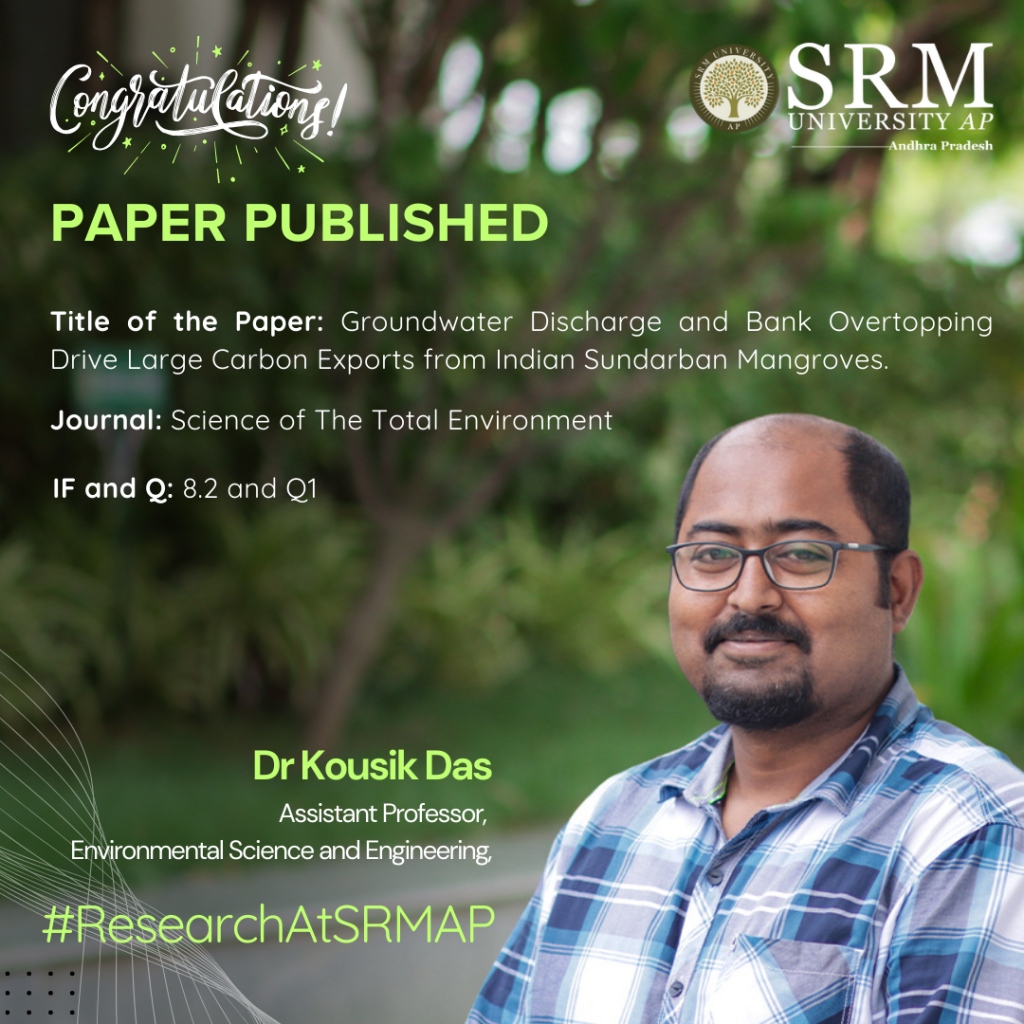
The Sundarbans represent the largest mangrove system on Earth, covering >10,000 km2. These mangroves can export a vast amount of aquatic carbon that can be potentially sequestered for millennia. Dr Kousik Das, Assistant Professor at the Department of Environmental Science and Engineering, collaborates with Southern Cross University, Australia and IIT Kharagpur to conduct breakthrough research to analyse and estimate the carbon flux between the Sunderbans and the Bay of Bengal. He has published a research paper titled “Groundwater discharge and bank overtopping drive large carbon exports from Indian Sundarban mangroves” in the Q1 journal Science of The Total Environment, having an impact factor of 8.2.
Abstract
We estimate porewater-driven carbon exchange between the Sundarbans and the Bay of Bengal using high-resolution time series and a radon groundwater mass balance approach spanning a neap-spring tidal cycle. Submarine groundwater discharge (SGD) increased from neap to spring tides by 352 % up to a maximum of 65.6 cm d−1 largely driven by creek bank overtopping after the mid-tide. Exports of dissolved organic and inorganic carbon and alkalinity doubled between neap and spring, likely due to the ‘first flush’ of older porewater in the mangrove flats. Groundwater discharge was a significant driver of the net carbon export, contributing up to 86.7 % of DIC and 74.0 % of alkalinity during the spring tide while contributing a lower proportion of DOC (4 %–23 %). If these results are representative of the Sundarbans more broadly, carbon fluxes from the Sundarbans would be more than an order of magnitude higher than some of the world’s largest rivers on an areal basis, highlighting the importance of Sundarbans mangroves to global oceanic carbon budgets.
Practical Implementation/Social Implications of the Research
This study shows the global importance of the Sundarbans mangrove system, with significant dissolved inorganic carbon and total alkalinity fluxes to the Bay of Bengal. It also shows that mangrove SGD is an important driver of dissolved inorganic carbon, dissolved inorganic carbon (DIC) and total alkalinity (TAlk) exports and that bank overtopping during mid and spring tides drives a ‘first flush’ of carbon from groundwater. When carbon fluxes from the study site were upscaled to the entire inundated area of the Sundarbans, DIC and TAlk exports were smaller than some of the world’s largest rivers, however when adjusted to the catchment size (assuming the Sundarbans mangrove catchment area is the extent of the mangroves; 10,200 km2), the areal carbon fluxes from the mangroves are more than an order of magnitude higher than these river systems
Dr Das aims to continue his research and further explore the large flux of carbon export due to tropical cyclones from the Indian Sundarbans to the Bay of Bengal.
Continue reading →